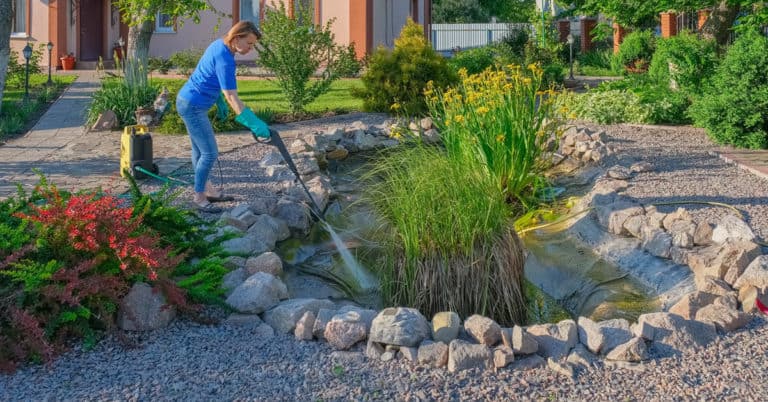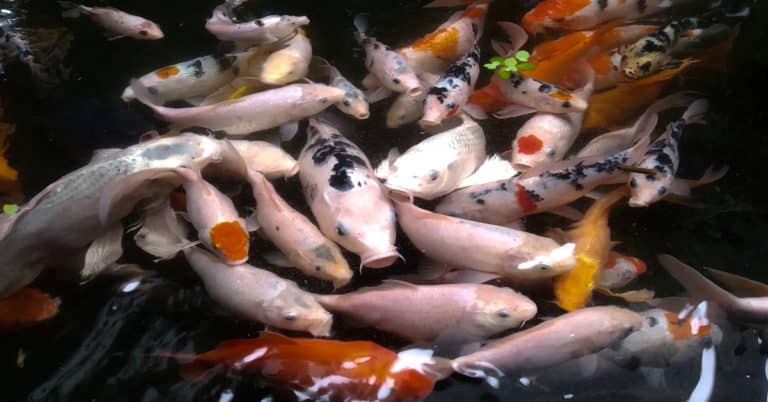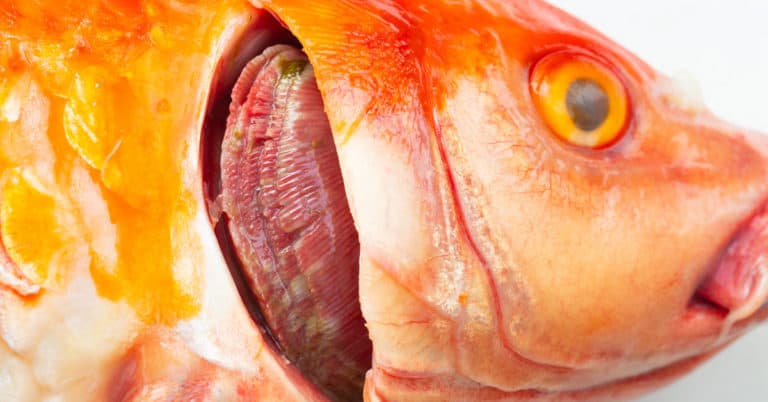Koi ponds are beautiful additions to our backyard, but they require a fair amount of upkeep. Since our pond is exposed to the elements, we have to think of ways to protect it from weather and predators.
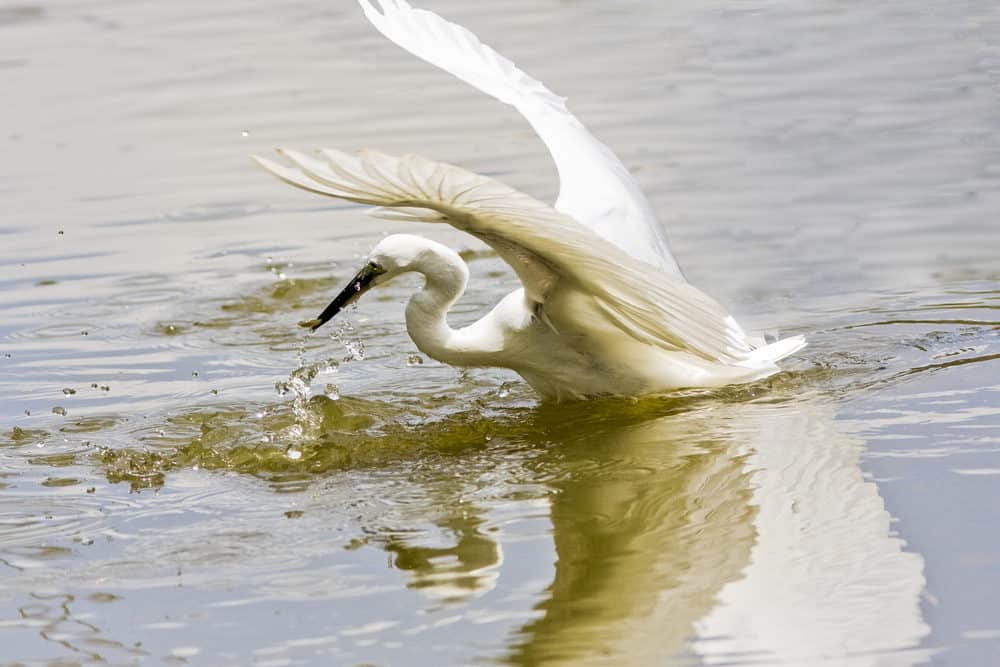
When managing our pond, we’re not only thinking about the maintenance of machinery like our pond pump and pond skimmer. We also have to take care of the wildlife we have in our pond.
Protecting our koi pond ensures the well-being of our backyard oasis, or whatever we deem to call it.
Koi pond protection is crucial because we’ve invested a lot of time and money into our backyard landscape. Leaving the pond wide open to predators means we’ll have to replace the lost fish. We also won’t feel as safe in our backyard as we used to.

As a pond owner, we need to understand the option available to protect our koi fish. Koi fish are part of the carp family bred over time to have different colors and patterns for ornamental purposes. We can choose to have other types of fish in our backyard pond as well, we’re all inclusive here.
Knowing the koi fish predators to look out for can help us understand how to protect them.
These nasty winged creatures, known as Birds, can torment our Koi. Especially herons, egrets, and water birds, want to visit our pond because it looks like a buffet to them! They’re used to hunting for fish in faster-moving bodies of water, so our fish look like easy prey.
Owls and hawks are also known to stop by and steal a fish or two.
It’s hard to tell when a bird has raided our pond. They can swoop in, grab a fish, and fly away, leaving the pond undisturbed.
Something that is disturbed is the remaining fish! If they’re hiding all day, even when we feed them, then we can put the pieces together and assume that we’ve fed a bird or two.
We won’t know for sure that it was a raccoon that invaded our pond, but we’ll be able to tell that something wild has visited. Raccoons make a total mess of ponds, tearing out plants, displacing rocks, and more.
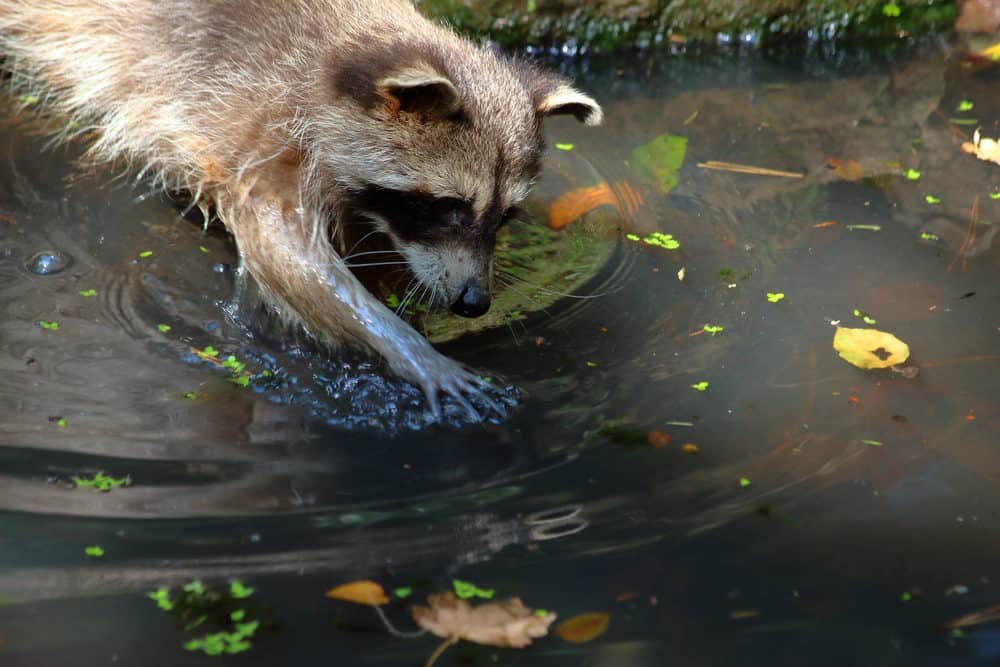
Believe it or not, snakes have made off with koi fish before. Cats can also luck out and snag a fish from our pond. Both of these critters usually go for the smaller fish so they can better manage them. They can be sneaky, so if we’re missing small fish, cats or snakes are the most likely culprit.
If we’ve ever gone to feed our fish but found an empty pond instead, we know the fear of koi pond predators. Koi fish typically swarm fresh food, so if they don’t come to gobble up what we’ve offered them, we know they’re afraid of something. Instead of eating, they’re hiding from a predator.
As we know, there are many different types of predators that might be staking out our pond. The following protections don’t individually protect against every predator, but they all help in some way.
Depending on the setup of our yard and who our predator is, a fence could help quite a bit. We’d be blocking access for many animals who slink into our yard. True, many critters can climb the fence, but it’s still a barrier. If they’re used to getting an easy meal from our pond, then having to work for it might be enough to put them off.
Fences are effective at keeping out larger animals, though raccoons won’t have much trouble scaling them. And of course, birds can fly right over it. If we don’t have kids or pets of our own, only then! we might want to look into installing an electric fence around the pond.
If we’re currently building a backyard pond or have the ability to expand it, that could help deter pests. Ponds that are less than eight feet around are small enough for predators to easily reach in. A larger pond makes it look more daunting, so predators won’t reach in at risk of falling in completely.
A deeper pond is also effective because our fish can swim down to escape predators coming in from the surface.
Whether our pond is deep or not, a fish cave is a great way to provide hiding places. They are hard plastic tunnels that sit at the bottom. They’re safe for fish to swim into and hide out until the threat is gone.
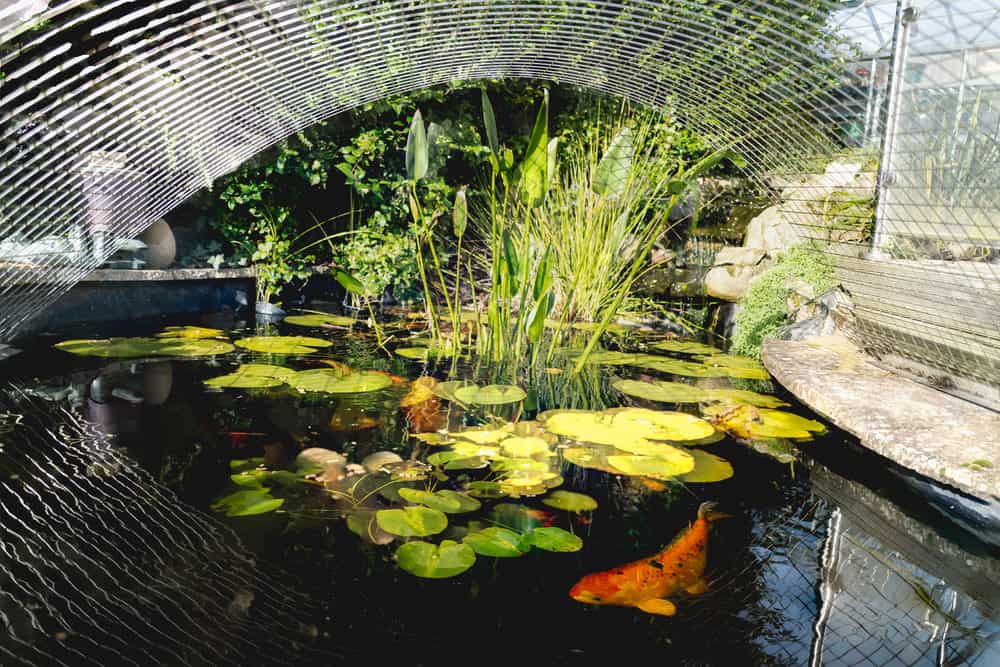
Motion sensors are a more expensive option, but they’re versatile. We can connect them to lights, sprinklers, or alarms. Predators get startled by a light turning on and will run away, thinking a human has come out to harm them, and we would defend our fish like family, don’t get me wrong.
They can also think that a sprinkler is a human spraying them, just as we might spray a cat with a water bottle when it hops up onto the table. Spraying water is an especially effective heron deterrent. The noise of an alarm will scare them away, also, but if this goes off during the night, it could also wake us-and our neighbors.
We can program motion sensors to go off in daylight and in the nighttime so we can sit back and know that our pond is under a watchful eye.
As I just mentioned, noise is disruptive in the nighttime, when everyone around us is trying to get some rest. But we don’t have to opt for a motion sensor alarm to scare our predators.
Sometimes just a wind chime can startle the animals enough that they’ll leave our pond alone. If we have an outdoor speaker system, we could even turn on talk radio or play a podcast. The human voices coming out of the speakers will make the animals think that a human is approaching.
Always consider the volume and duration of any noise-based protection we use. We don’t want to bother our family or scare off our neighbors when we’re only trying to scare off predators. Who knows what could happen if we do.
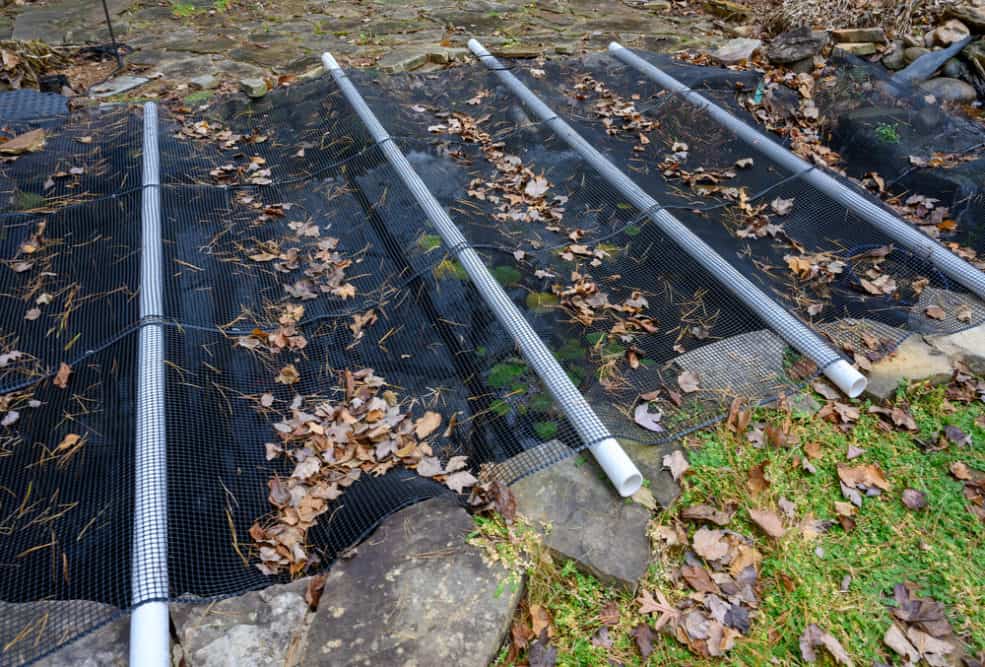
Plants floating on the surface give our fish a safe and natural cover. Predators won’t be able to see what’s underneath the water’s surface. The pond plants also provide a bit of shade for our fish. Since they restrict sunlight, these floating plants can also curb our algae growth. This can help our pond life flourish.
The right pond liner will keep our water clean, but it also protects our fish from predators. It covers the sides and bottom of our pond so pests can’t burrow through from the surrounding soil.
Pond netting is a common solution to backyard predator problems. It’s not too expensive, and we get a large roll of netting to use. It stretches over our pond and prevents birds and raccoons from having access to the fish below the surface.
Most pond netting is black so it will show up against the water. Some brands offer blue or another color netting so we can find something that suits our taste.
Depending on our surrounding garden landscaping, metal grating is an attractive solution to pond predators. We can find different patterns that will fit in with any sculptures or wrought iron accessories we have in our garden and on our patio.
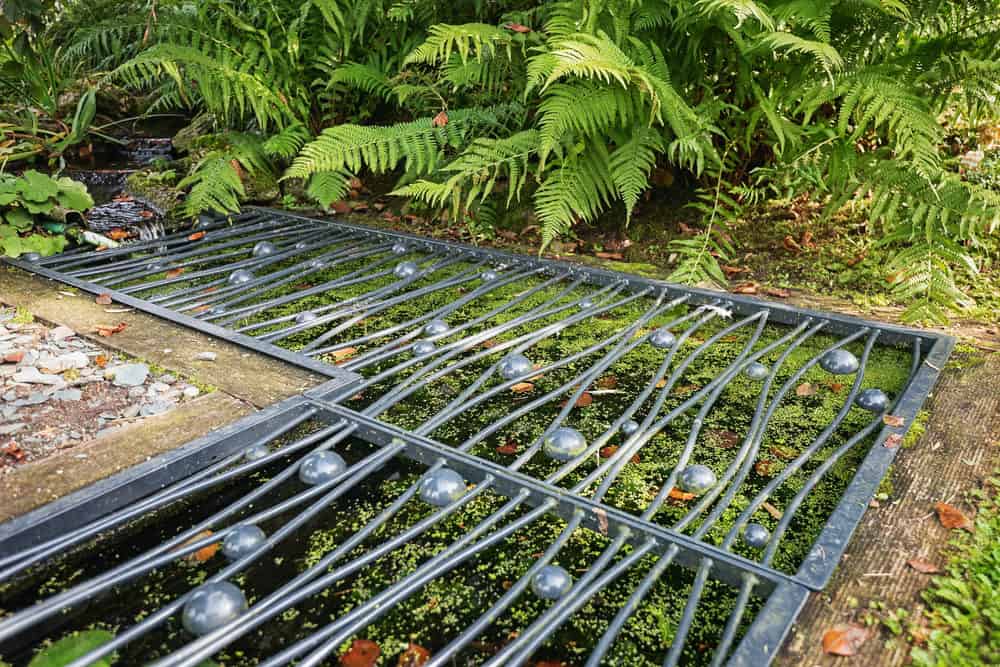
Because the grating is such a strong metal, it’s safe to use if we have children and pets. They won’t trip on it and fall in the pond, as they possibly could with netting. This doesn’t mean they should walk on the metal grating, we must teach them better.
Fishing line is one way to protect the surface of our pond without drawing attention to it, as a pond cover like metal grating or pond netting would do. Since the fishing line is clear, we can still enjoy the natural aesthetics of our backyard pond.
A bonus to clear fishing line is that predators can’t see it, either! When we string it across the surface of our pond in a criss-cross pattern, they won’t know where to step to avoid it.
Fishing line is also cheaper than pond netting or metal grating, so we could give this option a try without spending a lot of money. If it seems to work well, we can keep it in place or upgrade to netting or metal grating.
Herons and other mammals often approach the edge of our pond before wading in to grab their prey. We can throw them off by changing the edging of our pond. Instead of the natural, gentle slope of land leading into the pond, create a stark drop-off.
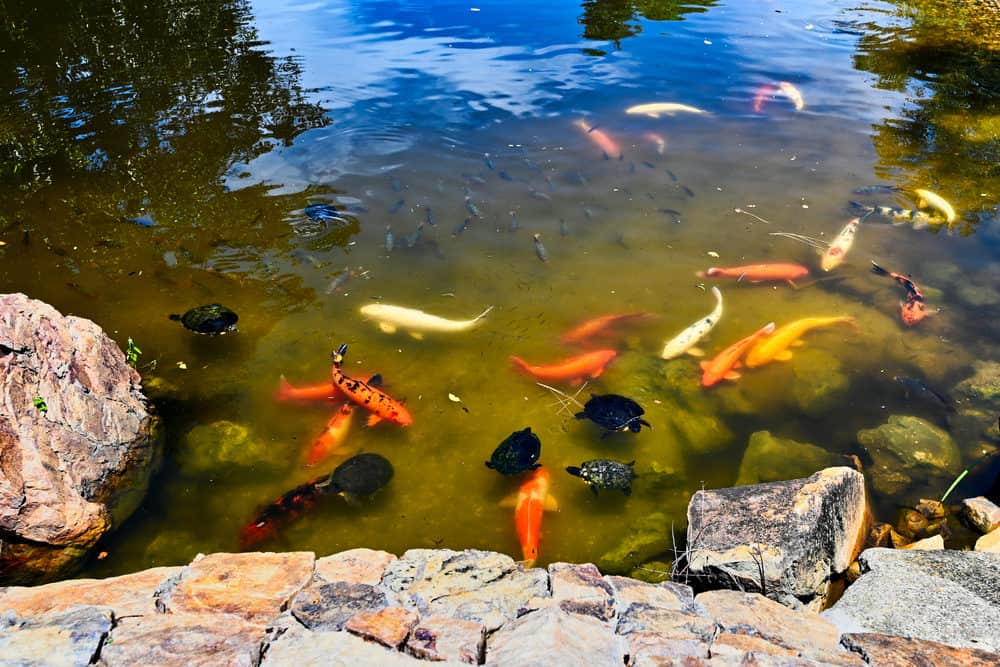
Predators will ease their way into the pond thinking they can walk a few steps to reach our fish. Then they’ll fall right into the pond with a splash! The predator will struggle to regain footing, giving our koi fish time to safely hide.
Another way to establish the edge of our pond is to stake bamboo poles into the ground every few feet. When we string a fishing line between the poles, it creates a barrier that will trip up herons and mammals that are trying to reach into our pond from the edge.
We can double-up a bit with this approach, too. Raid our used CD collection and hang some of those discs we never listen to along the fishing line. They’ll blow gently in the breeze and create flashes of light. Birds and other predators don’t like the uncertainty of not knowing when the light is flashing at them and where it’s coming from, so they’ll stay away completely.

A bonus to using bamboo barriers is that they’ll look natural in our yard. We can spruce up our surrounding landscape to make them look like part of our aesthetic.
The water alone can draw predators to our pond. Once they’re close, they usually explore more as they realize fish are living in the water. If we use pond dye, we’ll obstruct the predator’s views. They won’t know what’s beneath the surface.
Pond dye is safe for our fish. It tints the water and also restricts the sunlight that causes algae to grow wild in our pond. Win-win!
A scarecrow situated near our pond might be enough to make a predator think we’re sitting there waiting for them. But after a few nights, they’ll probably wise up to this method.

We can keep the predators guessing by moving the scarecrow or installing several in different areas. We can also step up our game with a motion-activated scarecrow. These machines have a water feature in their system so they can spray an animal that gets too close.
Scarecrows aren’t the only decoys we can place in our yard. Animal decoys can also startle predators. It’s best to choose another predator decoy so the real-life animal will worry that they’re about to get in a fight.
If we place these animal decoys around the pond, they can look fun and natural for us and our family. But any approaching predator will see that something else is taking his snack!
Bird decoys are especially effective because they look poised to swoop down on any predator that dares set foot near their pond. Only an incredibly brave predator would sneak up on a decoy heron!
We can also find floating alligators to “swim” in the pond if we don’t want anything visible on the edge. Some decoys have options for sound effects, so they sound like the animal they appear to be.
A unique decoy to try is a koi fish, also called a DeKoi! It might seem strange to have fake koi fish floating around with our real fish because they will attract predators. But the fake koi can’t swim away like the real ones, so the predator is more likely to catch a plastic fish while the real ones hide.
Not all animals have to be decoys! If we have a dog, we can use our pet to help protect our pond. We can train an outside dog to sleep near the pond and wake up when it senses another animal encroaching on its territory.
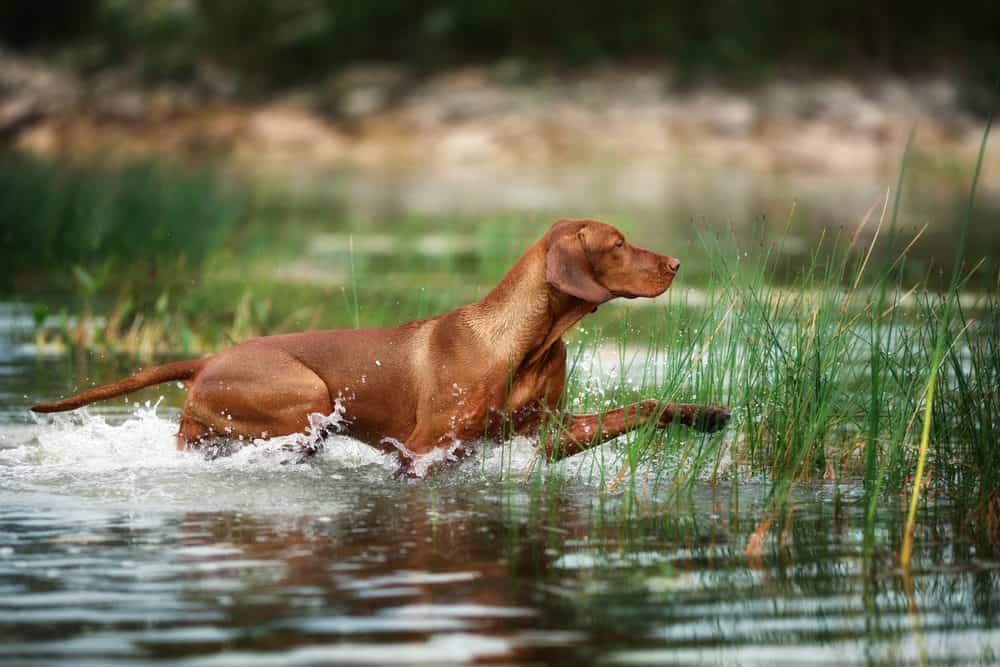
That is of course, if our dog does not like the taste of Koi fish, and that’s a big IF. But IF our dog is comfortable around our garden pond, we can use that to our advantage.
It sounds silly, but there’s nothing wrong with trying all of these options! Not at the same time, unless we want to turn our yard into a noisy obstacle course. But if we routinely change out our methods of protection, predators will never know what’s in store for them.
If we start with a fishing line, predators might explore night after night and trace the pattern over the water. They’ll learn to reach around it. But if we use a fishing line for a month or two while we deepen our pond or change the edging, then they’re caught off guard.

